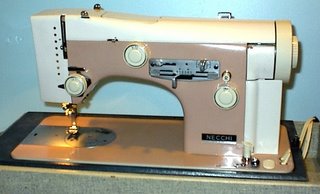
Collecting Antique and Vintage sewing machines is a growing hobby. Some collect just because they are beautiful to look at. The time, effort, and expense expended in decorating these mechanical marvels with gold, green, and red decals is something that is unseen in this day and age. Others collect sewing machines because they marvel at the precision mechanism and the inherent reliability. A 100-year-old sewing machine in good repair will still function today and make a straight stitch to rival the newest computer operated machines. Still others buy old sewing machines to use in day to day sewing. They may enjoy the feeling of sewing without benefit of electricity on a treadle or handcrank machine or they may just enjoy sewing for extended periods without experiencing breakdowns common to modern plastic sewing machines.
Regardless of the reason you buy old sewing machines, it helps to know how they work and how to maintain them. This is more difficult than it should be because there is very little consumer information available on old sewing machines. Instruction books can be tough to locate for many models; the handful of repair books I have found were published in the 1970s and before, are complicated and incomplete. Sewing machine dealers and repair shops have service manuals, but they guard them jealously and you will have a difficult time talking your local dealer into copying one for you. In the last couple of years, the Internet has spawned some sites where antique and vintage sewing machines are discussed and parts are swapped. If you can find those sites, you will learn more about old sewing machines there than from any other single source.
This blog is my attempt to help the antique and vintage sewing machine buyer to select and maintain an all-metal machine.